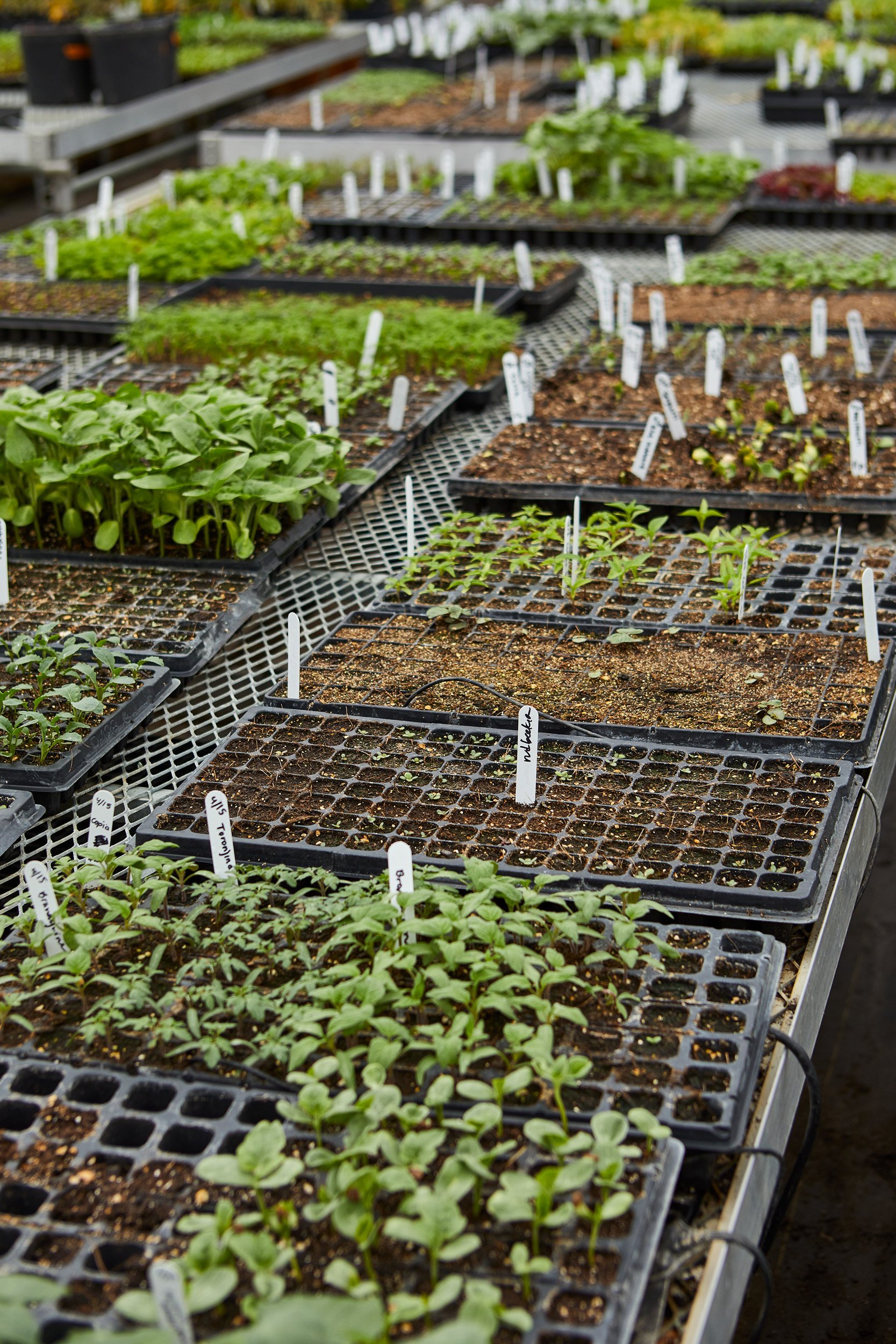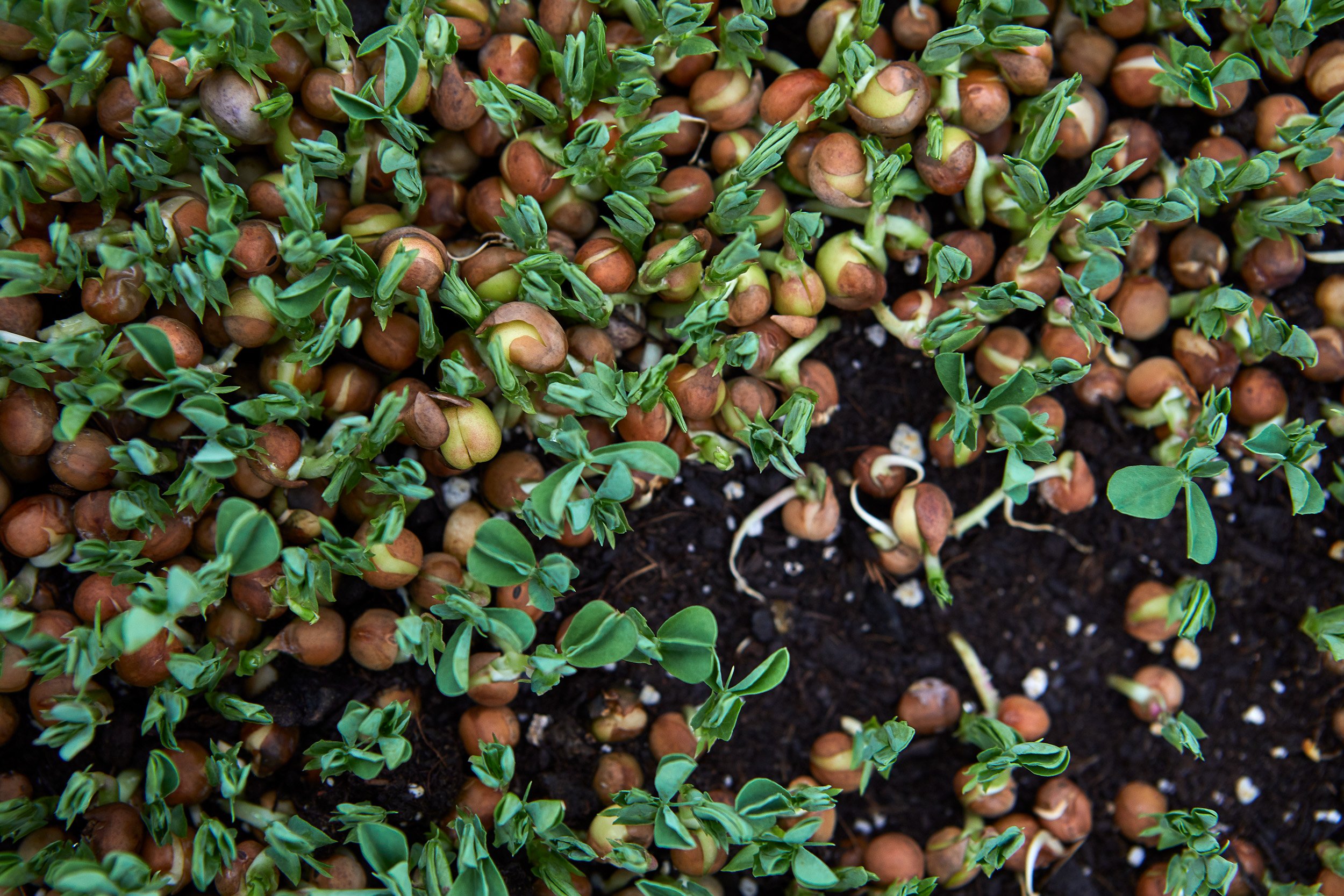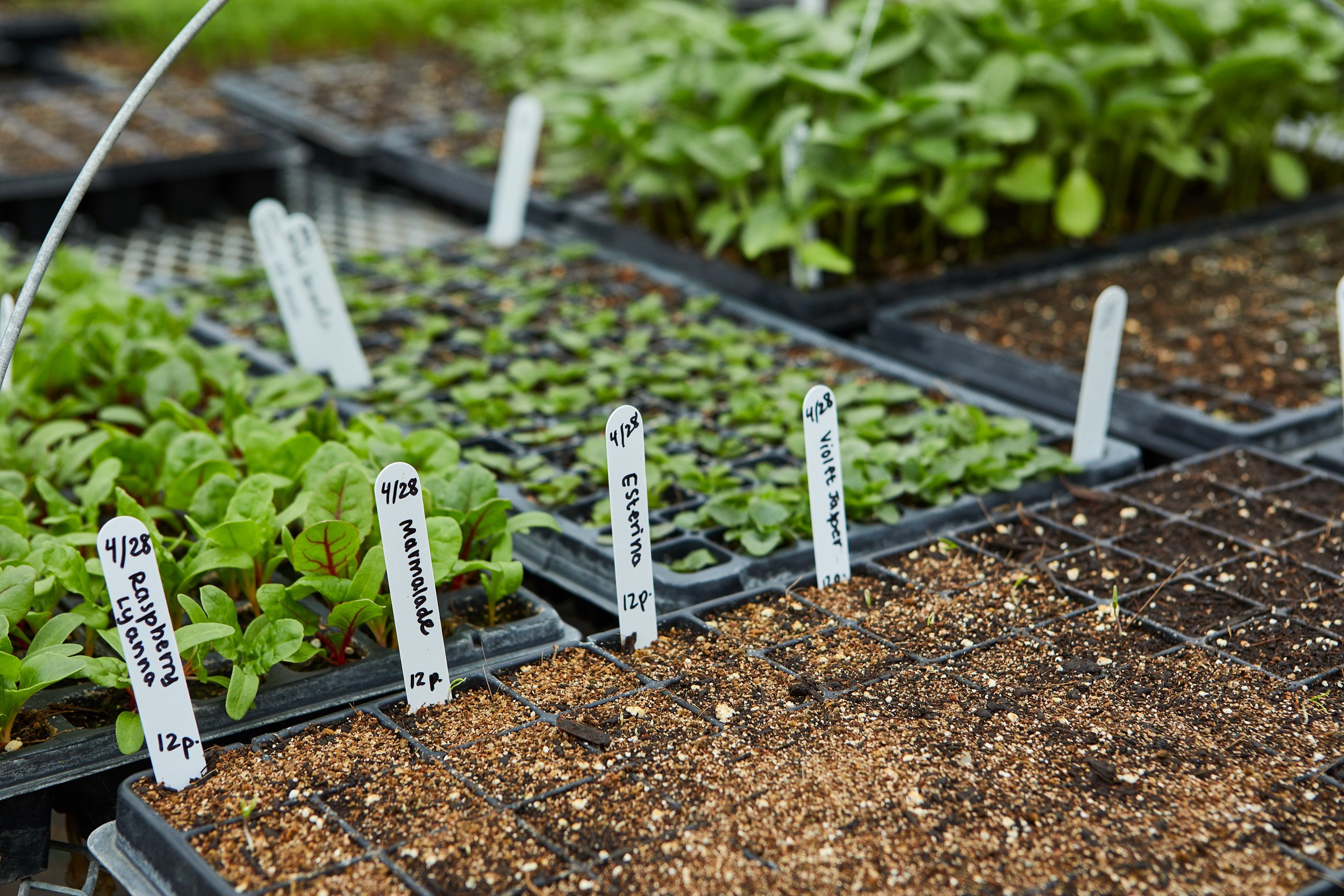Seed Selection
By Brian Morgan
Last year we seeded almost 300 varieties of fruits, vegetables, flowers, and herbs. Some were direct-seeded, others transplanted, and any that were propagated from cuttings were not even accounted for in that tally. On about 2 acres of cultivated fields, that’s more than 150 varieties per acre, plus the ~60 varieties of perennial flowers, shrubs, and trees that make up the perennial buffer zones in our Ridge Garden. It’s a lot of biodiversity in a small space. Many market-garden-style operations have a similar density of diversity, so we are not alone in this ambitious maze of variety selection, experimentation, and placement.
Each year, we reflect on what varieties worked for us— what grew well, harvested easily, tasted surprisingly sweet, challenged the kitchen to tap into their endless creativity to prepare produce in a new way, or delighted us in any sort of unexpected way. We also get the chance to ask one of our owners, Diana McCargo, if she has any crops or varieties that her decades of growing experience would recommend we try. It’s a collaborative effort and a full representation of the many individuals and teams on the farm.
“On about 2 acres of cultivated fields, we grow more than 150 varieties per acre.”
Regional Seed Work & Supply
To add another variable, we’re also trialing some seeds that are not yet on the commercial market in order to provide feedback for seed breeders. Hopefully this contributes (even in a small way) to the development of our regional small-scale seed companies that we heavily rely on to be able to grow delicious food for our kitchen to cook with and for our community to enjoy. Johnny’s Selected Seeds in Maine and High Mowing Seeds out of Wolcott, Vermont, are our two primary suppliers that I would recommend to anyone growing at home. There is also a seed exchange at the local Charlotte library for home gardeners that sounds like a great resource and wonderful community-driven project.
All this being said, we love seeds, we revel in varieties, and if you’re wondering what to grow— feel free to reach out for any tidbits we can share.
Recommendations from Meg
Megan Moody, who helps to manage the market garden here at Philo Ridge Farm, has been deep in the throes of planning the selection and placement of many successions and varieties for the season. I asked her for a couple highlights she’s looking forward to from a personal perspective, and what she might recommend to someone starting a garden at home.
“GinFiz is a new hybrid tomato variety we’re trying that not only has a fun name, but beautiful coloration, and a balanced fruit that should shine in sandwiches and salads. I got to travel in Italy this winter so I’ve been thinking about tomatoes and basil since January,” she said.
Another classic Meg shared, “Iceberg lettuce is going to be making a comeback this year. A variety called Crispino has a refreshing crunch to it.”
Iceberg lettuce is usually associated with bland, calorically bereft salads of the 90s, but we are excited to nurture them in a small scale setting and pair them with fresh tomatoes and other juicy, sweet summer vegetable treats.
Meg is also planning for flowers this year, and couldn’t help but mention eucalyptus and sweet peas. Eucalyptus is a beautiful plant that can shine either as a fresh flower or dried, and sweet peas offer an adventurous climbing vine with gorgeous flowers and incredible fragrance.
For the home garden, she says sweet peas are a fun flower to try, dinosaur kale is a classic that will provide nourishment all season long, and watermelon radishes are great for a quick pickle recipe, or kimchi, or just a splash of color in a fresh salad. The radishes also store very well in the fridge if you happen to forget about them. And thinking forward to fall (I know, I said it!), winter squash and gourds are a low maintenance crop that can be a sort of treasure hunt to look forward to in late September.






